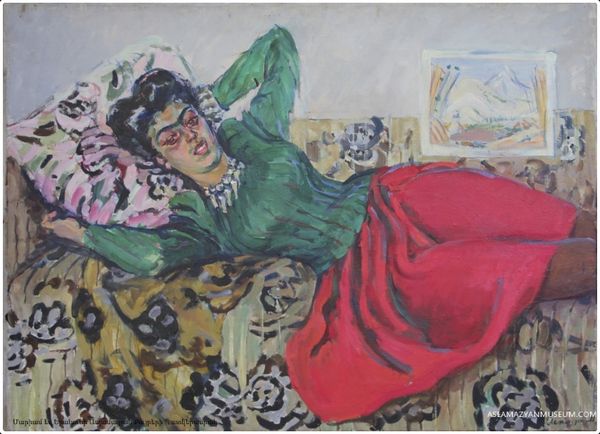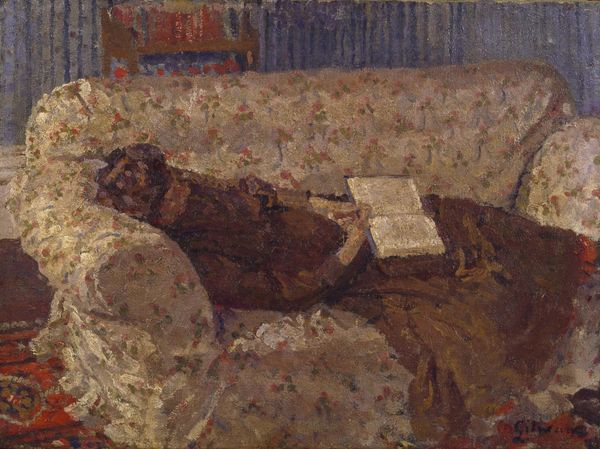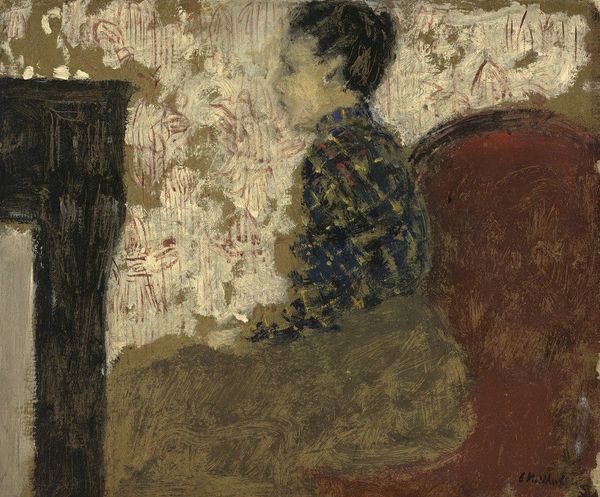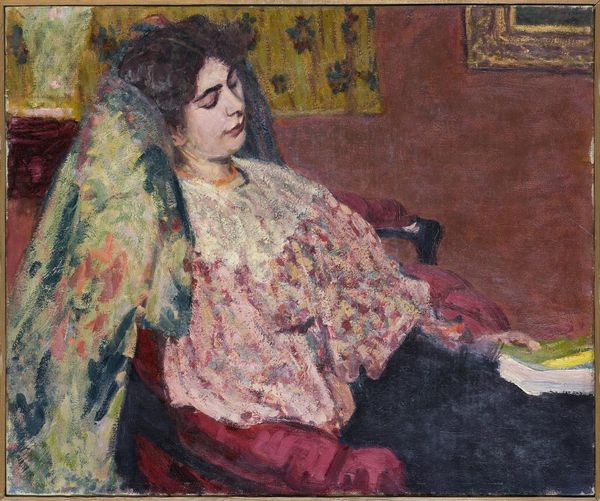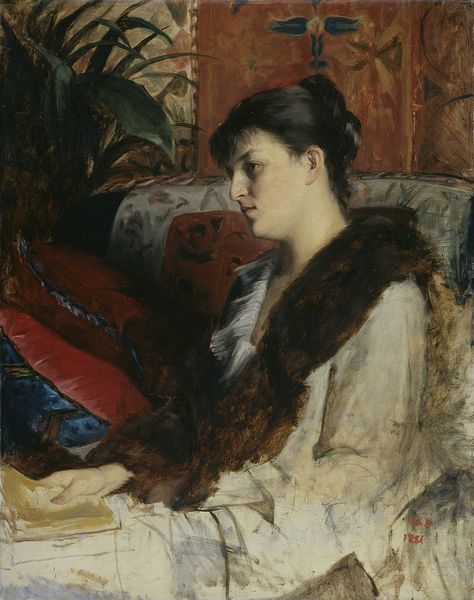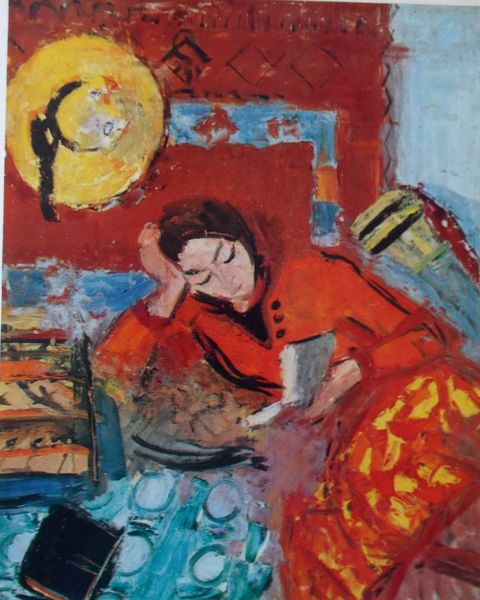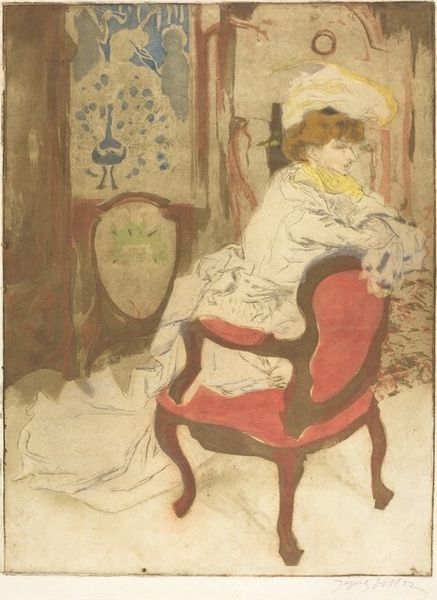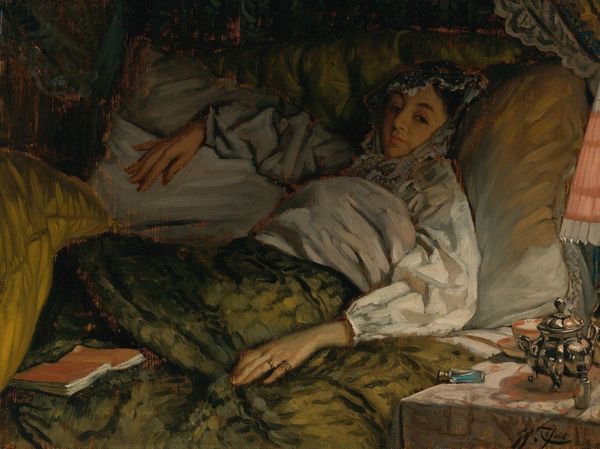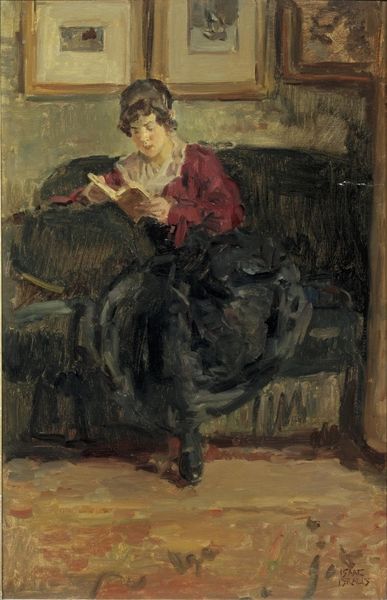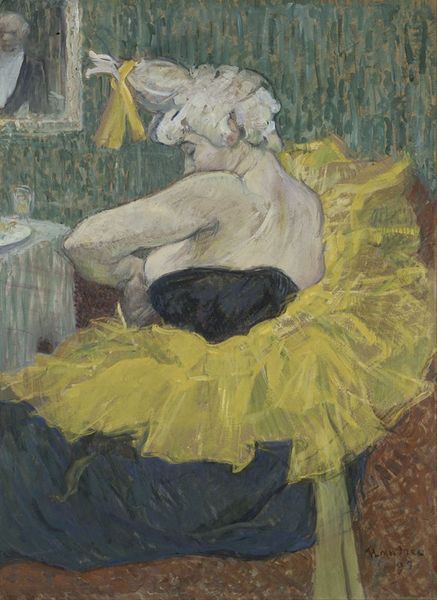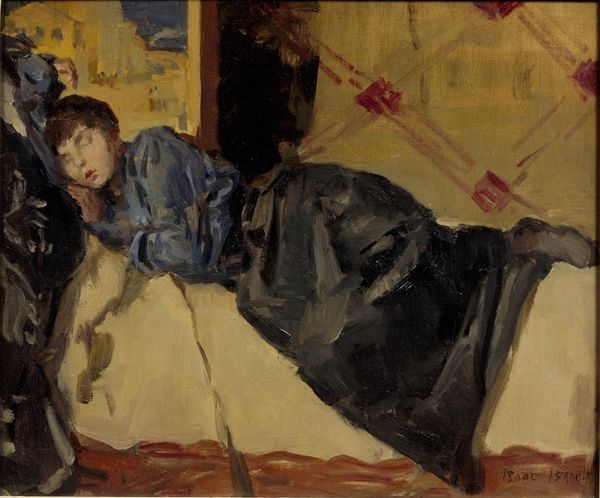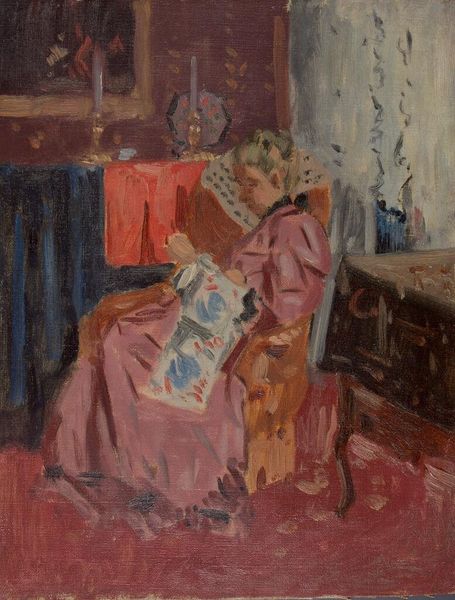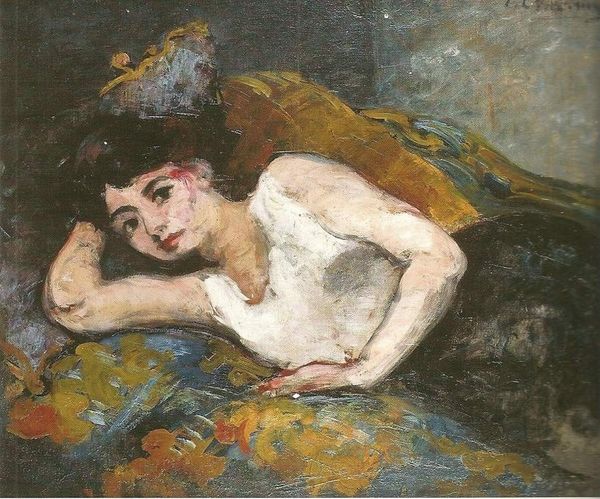
Copyright: Public Domain: Artvee
Curator: We're looking at "Madame Hessel on the Sofa," painted by Édouard Vuillard around 1900, rendered in oil on canvas. Editor: My first impression is quiet intimacy; it feels incredibly domestic and personal, almost like catching a glimpse of someone in their private space. The colors are muted and harmonious. Curator: Vuillard was a key figure in the Intimist movement, and this piece perfectly exemplifies that focus on depicting everyday, interior scenes. It’s about the representation of bourgeois domesticity, but beyond that, it engages with gender roles within the household. The comfortable languor we see is afforded, arguably, by privilege. Editor: Absolutely, it reflects a certain kind of labor hierarchy—who is permitted to relax, and at whose expense? Considering the materiality, I am intrigued by Vuillard’s brushstrokes, how he builds up layers to create textures; notice the rendering of fabrics with those thick strokes of paint, they’re far from photorealistic. Curator: Precisely. Considering Vuillard's involvement with the Nabis, this departure from direct representation toward symbolism is evident. The flatness, combined with decorative patterning, speaks to this—even the patterns feel claustrophobic. What I think is fascinating about Vuillard, particularly in representing women like Madame Hessel, is his subtly undermining the male gaze that typically dominates portraiture. Editor: It does make me consider the labor of leisure. Someone likely crafted the sofa she's reclining on, the fabric of her blouse—it's not just an image of a woman resting; it's also a product of extensive material production and domestic structures. What's also important is to contextualize Madame Hessel: she was an influential salonnière and art patron, thus, she probably had economic power as well. Curator: A critical point to raise, that economic positioning enabled her agency within that domestic space. Understanding the socio-economic framework surrounding this work complicates a singular read. It pushes us to examine these nuances, question who can dictate societal expectations. Editor: For me, analyzing the material conditions opens a pathway to understanding both the possibilities and limits of representing interiority and intimacy. Curator: And by bringing attention to social dynamics at play, one acknowledges not just intimate repose but how power intersects across society through different eras.
Comments
No comments
Be the first to comment and join the conversation on the ultimate creative platform.
